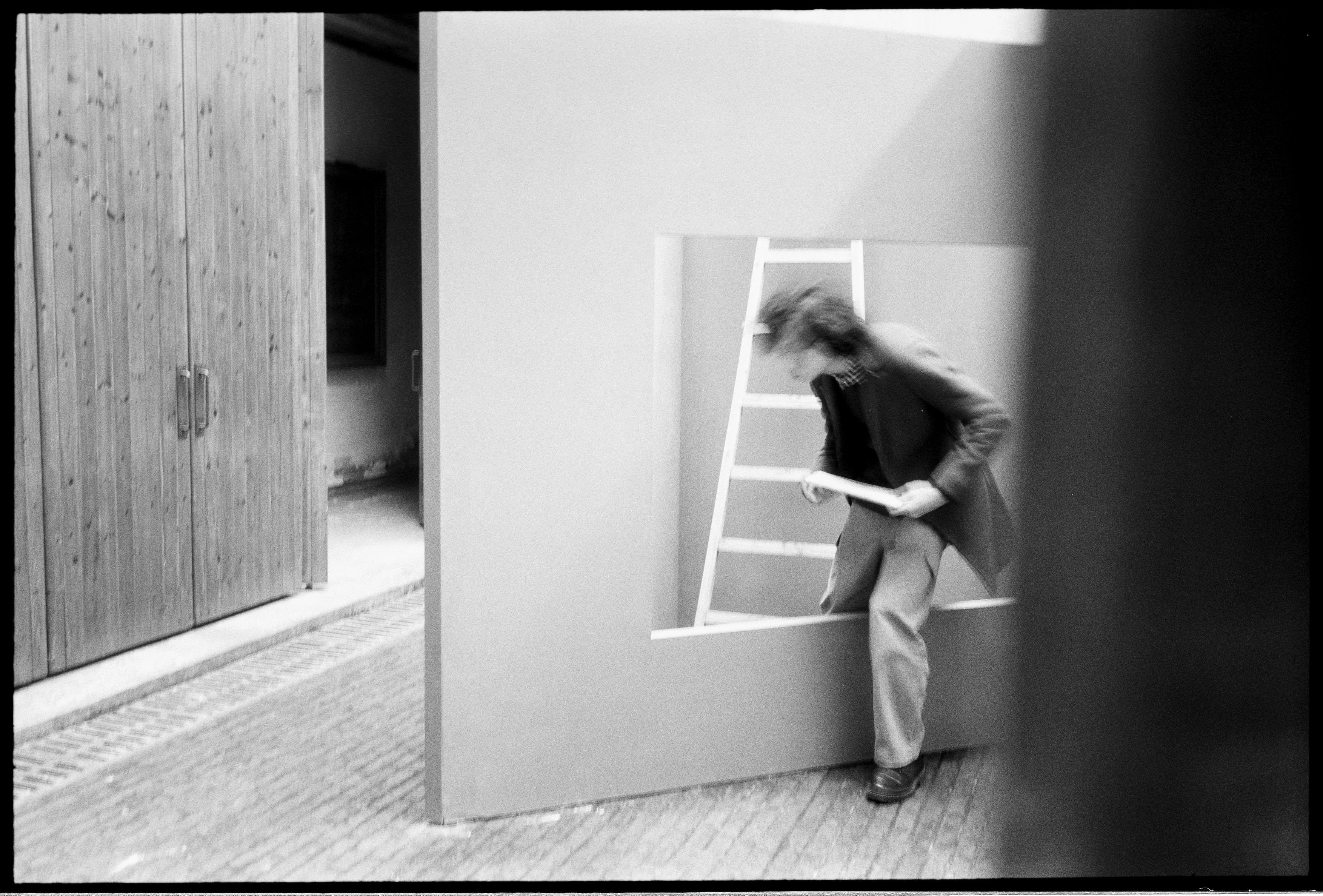Bus Station
Project details
Type: Performance
Year: 2019
Medium: Performative film, open show, impromptu
Type: Performance
Year: 2019
Medium: Performative film, open show, impromptu
《车站》使用表演作为实践方式,探索了车站空间的可能性以及等待的可能性。
Bus Station explored the the possibilities of station space as well as the possibilities of waiting through performance.
Bus Station explored the the possibilities of station space as well as the possibilities of waiting through performance.
为什么一些建筑师和空间设计师在谈论设计策略时使用表演这个术语?有没有可能他们认为表演可以帮助他们创造出空间特质,将我们与一个充满意义和快乐的世界联系起来?如果是这样,那么他们如何描述表演?
这并不是那么容易的——表演并不需要每个人都用同样的方式来定义。一个设计师的主题不一定是另一个设计师的。如果我们对使用表演这个术语感兴趣,那么我们应该知道为什么表演是有用的,以及我们如何在实践中使用它。
也许,为了清楚起见,我们可以在几个基本条件上达成一致。表演是一种生动的艺术形式,动作就是动作,语言就是语言,空间就是空间,家具就是家具,我们不需要任何特殊的、戏剧性的或与众不同的东西来表演。在我看来,表演或许可以在某种无意识的状态中跨过自己设定的防线,更加真切的体会甚至是最简单的动作。
车站作为一个城市的运输节点,总是快速又高效的更新着居民,而在这停留中,总是充满仓促、拥挤与疲惫。一群等待的人,沉默、焦急、争抢、冷漠、调皮、利己,每个人都带着不同的面孔。在这些或冷或热的短暂碰撞中,除了站台的名字,车站本身早已被人们抛到脑后。
通过表演,我试图探索车站的新功能以及等待的可能性。
Why do some architects and spatial designers use the term "performance" when discussing design strategies? Is it possible that they believe performance can help them create spatial qualities that connect us to a world full of meaning and joy? If so, how do they describe performance?
It is not as straightforward as it may seem – performance does not require everyone to define it in the same way. What is significant for one designer may not be so for another. If we are interested in using the term "performance," we should understand why it is useful and how we can employ it in practice.
Perhaps, for the sake of clarity, we can agree on a few basic conditions. Performance is a vibrant art form, where action is action, language is language, space is space, and furniture is furniture. We do not need anything special, dramatic, or extraordinary to engage in performance. In my view, performance may allow us to transcend our self-imposed boundaries in an unconscious state, enabling us to experience even the simplest actions more profoundly.
As a transportation hub in the city, a station constantly sees residents rushing in and out, while moments of waiting are filled with haste, crowding, and fatigue. A group of people waits, silent, anxious, competing, indifferent, mischievous, and self-centered, each wearing a different face. Amidst these fleeting encounters, the station itself is often forgotten.
Through performance, I aim to explore new functions and possibilities of the station and waiting itself.

首先我们需要一些工作来建立身体的感知,试图和一些物体互动,与它们交谈,并融入它们。真正的魅力在于,让物体开始说话。给予它们表达的空间,阅读它们的处境,研究背景,观察环境以及其他事物在做什么,观看世界中正在发生的所有动作和连接。
因此,我们和物体都是活跃的,在某种程度上来说,我们既是表演者,也是观看者。
小空间可能比大空间更容易隐藏秘密,小事件可以像大事件一样容易地引发深刻的思想。我们可以尝试确保居民在空间中移动的方式是精确的,他们的行为是简单的,他们的活动是不费力的。如果居民拥有了发现的权利,那么惊喜可能是重要的。
First, we need some practice to establish a perception of our bodies, interacting with objects and engaging in conversation with them. The real charm lies in making objects speak. Providing them with space for expression, reading their contexts, studying backgrounds, observing the environment, and seeing all the actions and connections happening in the world.
Therefore, both objects and ourselves are active participants, to some extent, both performers and spectators.
Small spaces may be better at concealing secrets than large ones, and small events can trigger profound thoughts just as easily as significant events. We can ensure that residents' movements in the space are precise, their actions are straightforward, and their activities are effortless. If residents have the right to discover, then surprises become significant.


1. 空间的排列和顺序。
2. 建筑元素,如墙、楼梯、门或窗户。
3.放置家具的位置,如座位或桌子。
这些简单的体系结构组件功能强大。沿着楼梯向上走到一个被书架环绕的靠窗座位,这个位置可以向外或向内看,这已经是一场盛宴了。这些要素中的任何一个都可以用来创造对性能的预期。它们中的任何一个都可以作为记忆的灵感,并使我们反思在那个地方的存在。
接着,一个车站出现了。
Performance can be created from ordinary phenomena, and here are some of the most evident examples:
1. Arrangement and sequencing of space.
2. Architectural elements such as walls, stairs, doors, or windows.
3. Placement of furniture, such as seating or tables.
These simple architectural components possess great potential. Walking up the stairs to a window-side seat surrounded by bookshelves is already a feast. Any of these elements can be used to generate expectations for performance. Each of them can serve as inspiration for memories and prompt us to reflect on our presence in that particular space.
Then a station emerges.







Bus Station | 2019